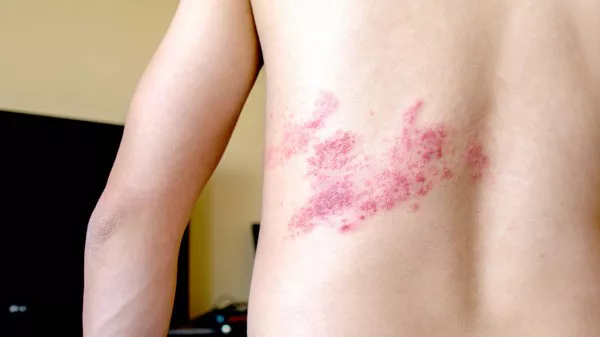Shingles, a viral infection caused by the varicella-zoster virus, not only brings about painful rashes but also often accompanies intense itching, adding discomfort to an already challenging condition. Dealing with shingles itch requires a multi-faceted approach, combining both medical interventions and home remedies to effectively manage symptoms and promote healing. In this comprehensive guide, we delve into the various methods available to alleviate shingles itch, offering insights into their effectiveness and safety.
Understanding Shingles Itch
Before delving into remedies, it’s crucial to comprehend why shingles itch occurs. Shingles manifests as a painful rash typically affecting one side of the body, accompanied by fluid-filled blisters. The virus responsible for shingles, varicella-zoster, is the same virus that causes chickenpox. After an individual recovers from chickenpox, the virus lies dormant in nerve tissue near the spinal cord and brain. However, later in life, the virus can reactivate, causing shingles.
The itching associated with shingles arises due to the inflammatory response triggered by the virus. As the rash develops and blisters form, the skin becomes inflamed, leading to sensations of itching and discomfort. Additionally, the virus can cause damage to nerve fibers, further exacerbating the sensation of itchiness.
Medical Interventions
When it comes to addressing shingles itch, medical interventions play a pivotal role, offering targeted relief and promoting faster healing. Healthcare providers may recommend the following treatments:
1. Antiviral Medications:
Oral antiviral medications such as acyclovir, valacyclovir, or famciclovir are commonly prescribed to reduce the severity and duration of shingles outbreaks. By suppressing the replication of the varicella-zoster virus, these medications help alleviate symptoms, including itchiness.
2. Topical Treatments:
Over-the-counter or prescription-strength topical creams containing ingredients such as calamine, lidocaine, or capsaicin can provide temporary relief from shingles itch. These creams work by numbing the nerve endings in the affected area, reducing the sensation of itching and discomfort.
3. Corticosteroids:
In cases where the itching is severe and accompanied by significant inflammation, healthcare providers may prescribe corticosteroids to help reduce inflammation and alleviate itching. These medications are usually administered orally or via injection and should be used under medical supervision due to potential side effects.
4. Antihistamines:
Oral antihistamines such as diphenhydramine or loratadine may be recommended to help alleviate itching associated with shingles. These medications work by blocking the action of histamine, a compound released during allergic reactions and inflammatory responses.
5. Pain Management:
In addition to addressing itchiness, managing pain is crucial in shingles treatment. Analgesic medications such as acetaminophen or nonsteroidal anti-inflammatory drugs (NSAIDs) can help reduce pain and discomfort associated with the rash.
Home Remedies
In conjunction with medical interventions, several home remedies can offer relief from shingles itch. While these remedies may not directly target the underlying virus, they can help soothe the skin and alleviate itching:
1. Cool Compresses:
Applying cool compresses or ice packs to the affected area can provide immediate relief from itching and inflammation. The cold temperature helps numb the nerve endings, reducing the sensation of itchiness.
2. Oatmeal Baths:
Adding colloidal oatmeal to bathwater and soaking in it can help soothe irritated skin and alleviate itching. Oatmeal contains compounds that possess anti-inflammatory properties, making it an effective remedy for various skin conditions, including shingles.
3. Aloe Vera Gel:
Applying pure aloe vera gel to the rash can help soothe the skin, reduce inflammation, and alleviate itching. Aloe vera contains compounds that promote healing and have a cooling effect on the skin, providing relief from discomfort.
4. Baking Soda Paste:
Mixing baking soda with water to create a paste and applying it to the rash can help reduce itching and irritation. Baking soda has alkaline properties that help balance the skin’s pH and alleviate inflammation.
5. Calamine Lotion:
Calamine lotion, a combination of zinc oxide and ferric oxide, can be applied topically to the rash to help soothe itching and dry out blisters. The cooling effect of calamine lotion provides relief from discomfort and promotes healing.
Preventive Measures
While managing shingles itch is essential, taking preventive measures can help minimize the risk of complications and promote faster recovery. Some preventive strategies include:
1. Vaccination:
The shingles vaccine, recommended for individuals aged 50 and older, can significantly reduce the risk of developing shingles and its associated complications. Vaccination not only protects against shingles but also helps prevent postherpetic neuralgia, a chronic pain condition that can occur after shingles.
2. Stress Management:
Stress can weaken the immune system and trigger shingles outbreaks. Practicing stress-reduction techniques such as meditation, deep breathing exercises, or yoga can help lower stress levels and reduce the likelihood of shingles recurrence.
3. Healthy Lifestyle:
Maintaining a healthy lifestyle, including a balanced diet, regular exercise, and adequate sleep, can bolster the immune system and support overall health. Eating a diet rich in fruits, vegetables, and lean proteins provides essential nutrients that support immune function and promote healing.
4. Prompt Treatment:
Seeking prompt medical treatment at the onset of shingles symptoms can help minimize the severity of the outbreak and reduce the risk of complications. Early intervention with antiviral medications can shorten the duration of the illness and alleviate symptoms, including itching.
Conclusion
Shingles itch can be a distressing symptom that accompanies the painful rash caused by the varicella-zoster virus. However, with a combination of medical interventions, home remedies, and preventive measures, individuals can effectively manage itching and promote healing. By understanding the underlying causes of shingles itch and adopting a comprehensive approach to treatment, individuals can find relief and regain comfort during this challenging time. It’s essential to consult healthcare providers for personalized treatment recommendations and guidance on managing shingles symptoms effectively.



























